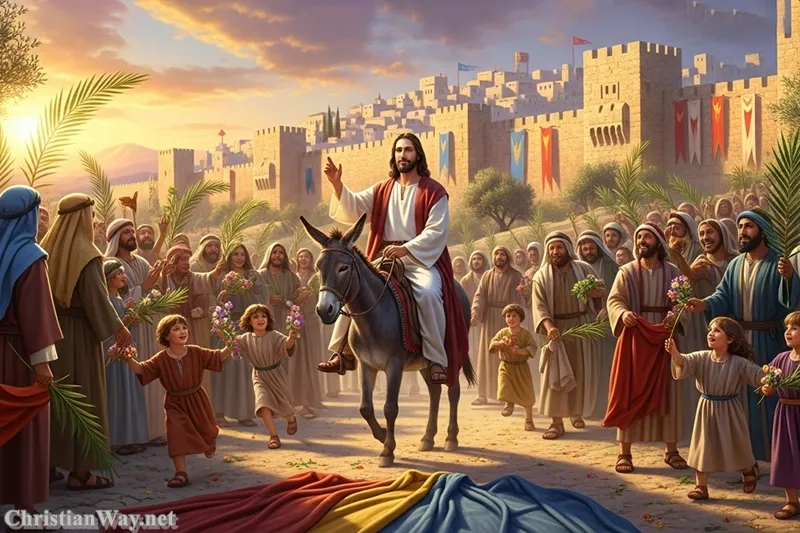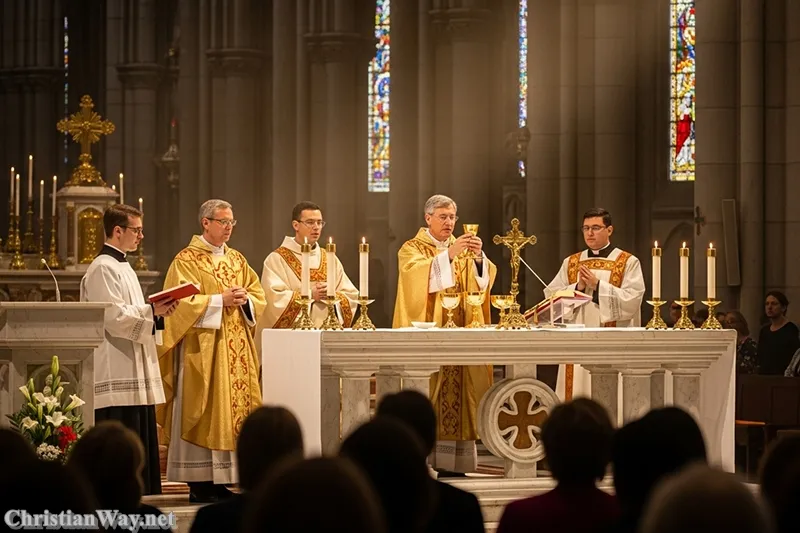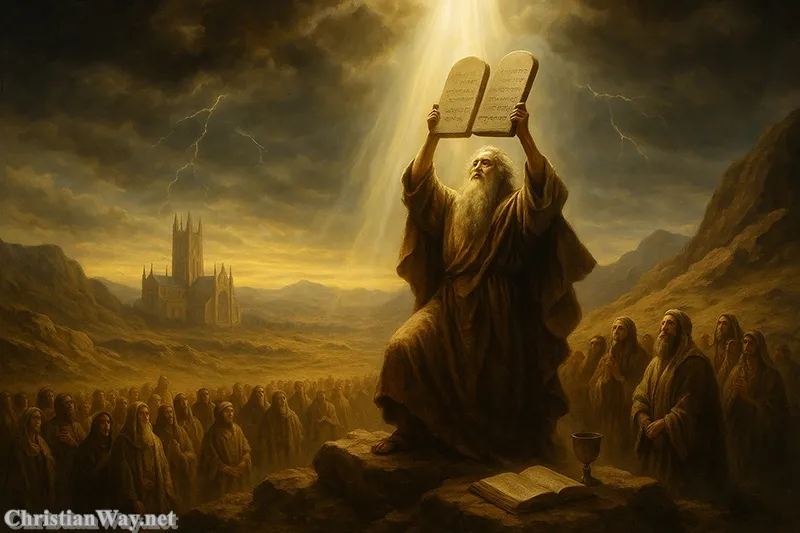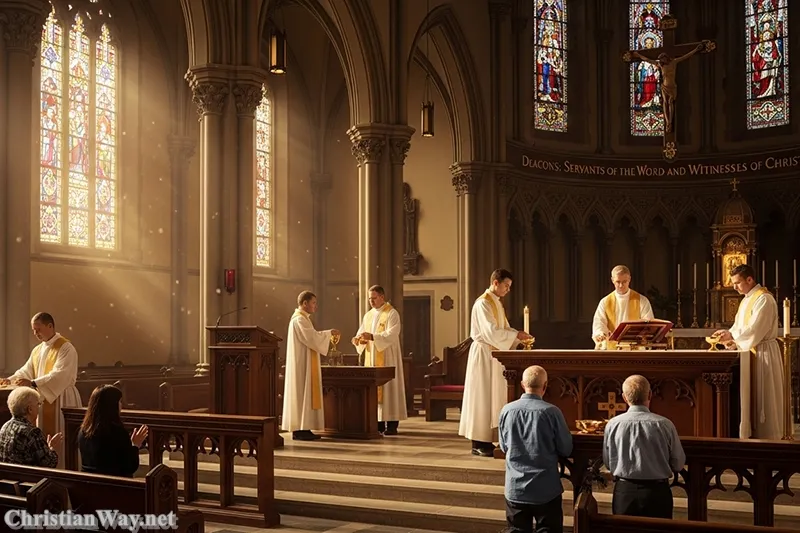Dear friends in Christ,
Every Christian heart, at some point, finds itself standing in silent awe before the mystery of the Holy Trinity. We speak the words often — “In the name of the Father, and of the Son, and of the Holy Spirit” — yet who among us can truly grasp the depth of what we profess? This is not a formula or a mere theological idea; it is the very heartbeat of our faith, the mystery at the center of all creation and redemption.
The Trinity is the revelation of who God truly is: not distant, solitary, or impersonal, but a communion of living love. In the eternal life of the Father, Son, and Holy Spirit, we glimpse the fullness of divine relationship — perfect unity in perfect diversity. Every act of creation, every moment of grace, every breath of prayer flows from this sacred mystery.
To contemplate the Holy Trinity is to look upon the deepest truth of reality itself. It is to see that love is not simply something God does — love is what God is.
The Trinity: God Revealing Himself as Love
When Jesus walked among us, He did not come to reveal an abstract idea about God, but the very face of God’s inner life. He spoke of the Father who sent Him, and of the Spirit who would come after Him. Through Christ, we come to know that the one true God exists eternally as three divine Persons — Father, Son, and Holy Spirit — united in one divine essence.
The Father: Source of All That Is
From all eternity, the Father is the unbegotten source of divine life and love. He is not “Father” because He created the world, but because He eternally begets the Son. Before there was time or matter, before the stars began to burn, the Father was already pouring out His love in an eternal act of self-giving.
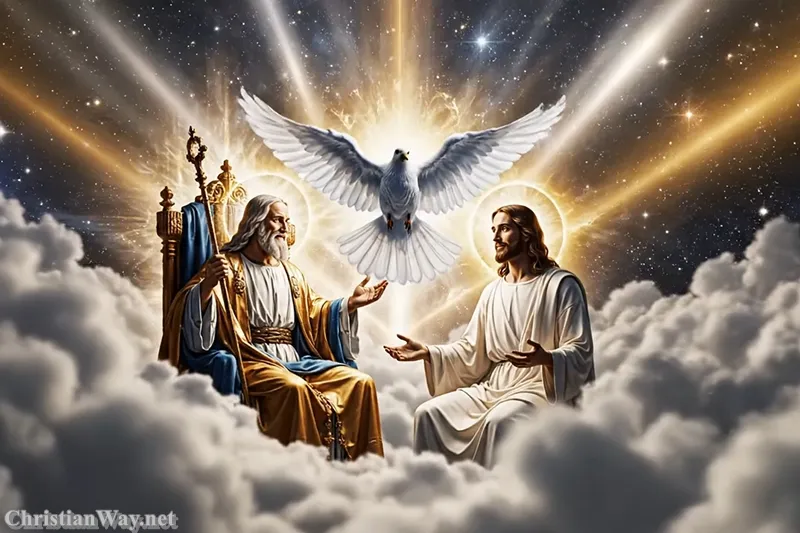
When Jesus taught us to pray “Our Father, who art in heaven,” He invited us into that same relationship. Through Christ, we are no longer servants, but children who share in the very intimacy that the Son has with the Father.
The Son: Word and Image of the Father
The Gospel of John opens with a truth that echoes through eternity:
“In the beginning was the Word, and the Word was with God, and the Word was God.” (John 1:1)
The Son — the Word — is the perfect image of the Father, begotten not made, consubstantial with Him. Through the Son, all things were created, and through His Incarnation, the invisible God became visible.
When Jesus took flesh, He brought the love of the Trinity into the heart of humanity. On the Cross, that love was revealed in its fullness: the Son offering Himself to the Father for the salvation of the world.
The Holy Spirit: The Breath of Divine Life
The Holy Spirit is the love that flows between the Father and the Son — not merely a feeling, but the living bond of their unity. When Jesus breathed upon the apostles and said, “Receive the Holy Spirit,” (John 20:22) He was sharing with them the very life of God.
The Spirit is the hidden presence of God within us, the quiet voice that teaches us to pray, to forgive, to love. Through the Spirit, we are drawn into communion with the Father and the Son — into the very heart of the Trinity.
Unity in Diversity: The Perfect Harmony of the Trinity
The doctrine of the Trinity is not a puzzle to be solved but a mystery to be adored. It reveals that God’s unity is not uniformity, and His diversity is not division. In the divine life, there is perfect communion without confusion.
The One Essence
God is one in nature, one in being, one in will. There are not three gods, but one God in three Persons. The unity of the Trinity is absolute — an eternal oneness of essence and glory.
The Three Persons
Yet within that oneness exists personal distinction: the Father is not the Son, the Son is not the Spirit, and the Spirit is not the Father. Each Person is fully God, not a part or aspect, but the whole divine reality existing in relation.
This mystery tells us something profound about existence itself — that to be truly one does not mean to erase difference, and to be distinct does not mean to be divided. The Trinity is the ultimate harmony of being and relationship.
The Trinity in Scripture
Though the word “Trinity” does not appear in the Bible, the revelation of the Triune God shines throughout Scripture.
At the moment of creation, the Spirit hovered over the waters, and God spoke His Word into being (Genesis 1:1–3). In that act, the Father creates through the Word and in the Spirit — the three working as one.
At the baptism of Jesus, the mystery becomes visible:
“The heavens were opened, and He saw the Spirit of God descending like a dove and coming to rest on Him; and behold, a voice from heaven said, ‘This is my beloved Son, with whom I am well pleased.’” (Matthew 3:16–17)
Here, the Father speaks, the Son stands in the waters, and the Spirit descends — three Persons revealed together in perfect unity.
Before His Ascension, Jesus gives the Great Commission:
“Go therefore and make disciples of all nations, baptizing them in the name of the Father and of the Son and of the Holy Spirit.” (Matthew 28:19)
This is not a symbolic formula — it is the very name of God.
The Trinity in the Life of the Church
From the earliest centuries, the Church has lived, prayed, and taught in the light of the Trinity. The sign of the cross, the structure of the liturgy, the prayers of the Mass — all are profoundly Trinitarian.
In Baptism
Through baptism, we are born again in the name of the Father, and of the Son, and of the Holy Spirit. In that sacred moment, the life of the Trinity is poured into our souls. We become sons and daughters of the Father, united to Christ, and filled with the Spirit who cries out within us, “Abba, Father.”
In the Eucharist
Every celebration of the Eucharist is an encounter with the Triune God. We offer the Son to the Father in the power of the Spirit. The priest prays, “Through Him, and with Him, and in Him, O God, almighty Father, in the unity of the Holy Spirit, all glory and honor is Yours.”
The Eucharist is, in itself, the living image of Trinitarian love — self-giving, unifying, and life-giving.
In Daily Prayer
When we pray, the Spirit prays within us, lifting our hearts to the Father through the Son. Saint Paul writes:
“For through Him we both have access in one Spirit to the Father.” (Ephesians 2:18)
To live as a Christian is to live within this flow of divine communion — always moving toward the Father, through the Son, in the Spirit.
The Trinity and the Human Heart
We were created in the image of God — and because God is a communion of Persons, we were made for relationship, for love, for community. The mystery of the Trinity is not only a truth about God; it is a truth about ourselves.
Created in the Image of Communion
Just as the Father, Son, and Spirit live in self-giving love, we too find our true identity in giving and receiving love. Isolation contradicts our nature; selfishness wounds the image of God within us.
When families live in love, when friends forgive, when the Church gathers in unity, the Trinity is mirrored in human life. Every genuine act of love participates, however faintly, in the eternal love that binds the Divine Persons together.
The Trinity and Redemption
Sin breaks communion — both with God and with one another. But in the plan of salvation, the Trinity works to restore what was lost: the Father sends the Son, the Son redeems, and the Spirit sanctifies.
In Christ, humanity is drawn back into the life of the Trinity. Salvation, then, is not merely escape from sin but participation in divine life — to dwell forever in the love of the Father, Son, and Holy Spirit.
The Mystery Beyond Words
The great theologians and saints — from Augustine to Aquinas, from the Cappadocian Fathers to modern spiritual writers — have all confessed that the Trinity surpasses every human concept. We can describe, meditate, adore, but never exhaust its depth.
Saint Augustine once compared the Trinity to the human soul, with its memory, understanding, and will — three faculties in one being. Saint Patrick spoke of it through the shamrock — three leaves, one stem. Yet every image, however beautiful, falls short of the divine reality.
In the end, the Trinity must be met not only with intellect, but with worship. To stand before this mystery is to bow in love before the God who is Love itself.
Living the Trinity
To live in the light of the Trinity means allowing love to shape every part of our lives. It means learning to love as the Father loves — freely and without measure; to forgive as the Son forgives — from the Cross; and to listen as the Spirit teaches — in the quiet of our hearts.
When we bless ourselves with the sign of the cross, we are not performing a ritual gesture but professing a mystery: that our whole being — body, mind, and soul — belongs to the Triune God.
Every Christian home, every parish, every act of mercy is called to reflect the life of the Trinity: unity in diversity, peace in communion, love that gives and receives without end.
In the Light of Christ
The Holy Trinity is not merely something to understand, but Someone to enter into. The Father calls us, the Son redeems us, and the Holy Spirit dwells within us. The whole Christian life is a journey into this divine communion — a homecoming into the heart of eternal love.
As we make the sign of the cross or whisper the Gloria — “Glory be to the Father, and to the Son, and to the Holy Spirit” — may it not be mere words, but a renewal of our faith in the living God who has made His dwelling among us.
May this mystery that surrounds us become the love that sustains us.
May the grace of the Lord Jesus Christ, and the love of God, and the fellowship of the Holy Spirit be with you all. (2 Corinthians 13:14)
Amen.
— Fr. John Matthew, for Christian Way
